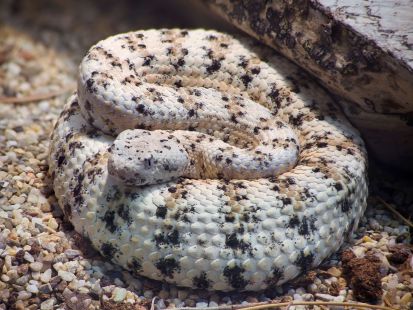
Southwestern Speckled Rattlesnake
Habitat
Associated mostly with arid areas strewn with rocks and boulders – alongside buttes, mesas, and desert outcroppings, but sometimes found on loose soil. Occurs in areas vegetated by sagebrush, creosote, thornscrub, chaparral, pinon-juniper woodland, succulent desert.
Color
Shows a great variety of body coloration which usually allows the snake to blend into its environment, from off-white, yellowish, gray, tan, pinkish, pale orange, to brown. Snakes from dark lava bed environments can be almost all black.
The body is marked with a vague pattern consisting of dark speckled banded markings.
Size
Adults are 23-52 inches in length (58-132 cm) averaging 2 – 3.5 feet.
Age
10 – 15 years
Diet
Eats small mammals, lizards, and birds.
Description
It displays a wide range of body colors, from off-white, yellowish, gray, tan, pinkish, and pale orange, to brown, which typically allows the snake to blend into its surroundings. A hazy pattern of dark-speckled and banded markings covers the body. Snakes from lava beds in the dark can be almost entirely black.
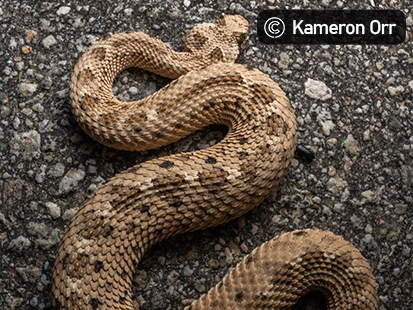
Sidewinder Rattlesnake
Habitat
desert regions
Color
The color pattern consists of a ground color that may be cream, buff, yellowish-brown, pink, or ash gray, overlaid with 28–47 dorsal blotches subrhombic or subelliptical in shape
Size
Most adults are 50–80 cm (19.5–31.5 in) in length
Age
13 years
Diet
Juveniles use their tails to attract lizard prey, a behavior termed “caudal luring”. Adults lose this behavior as they make the transition from lizard prey to their primary diet of desert rodents, birds, and other snake
Description
Adults of this diminutive species range in length from 43 to 76 cm (17 to 30 in). The average adult is 50–80 cm (19.5–31.5 in) long. Unusual for this group of snakes, the females are larger than the males.
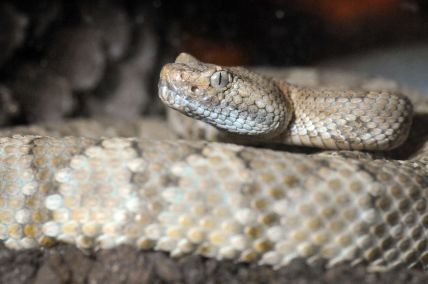
Panamint Rattlesnake
Habitat
Associated mostly with habitats composed of rocky outcrops and boulders, but also found in creosote bush and cactus deserts and open coniferous woodlands.
Color
Shows a great variety of body coloration which usually allows the snake to blend into its environment – tan, yellowish, orangish, gray, off-white, brown.
The body is marked with a pattern consisting of dark speckled banded markings, which can be vague or distinct.
A dark band or bands on the tail, but not usually alternating with light bands.
The ground color of the tail is generally the same as the body color, not contrasting sharply with it.
The last dark tail bands often seem to fuse together into one large black band just before the rattle”
Age
10 – 25 years
Diet
Eats small mammals, lizards, and birds.
Heat sensing pits on the sides of the head help the snake to locate prey by their warmth.
Long, hollow, movable fangs connected to venom glands inject a very toxic venom which quickly immobilize prey.
The snake can control the amount of venom injected and the fangs are replaced if broken.
An ambush hunter, it may wait near lizard or rodent trails, striking at and releasing passing prey. The snake then follows the trail of the envenomated animal and swallows it whole. Prey is also found while the snake is actively moving.
Description
A long, heavy-bodied, venomous snake with a thin neck, a broad, triangular head, and a rattle made of loose, interlocking hollow segments at the end of the tail. Every time the skin sheds, which can happen more than once yearly, a new rattle segment is added.
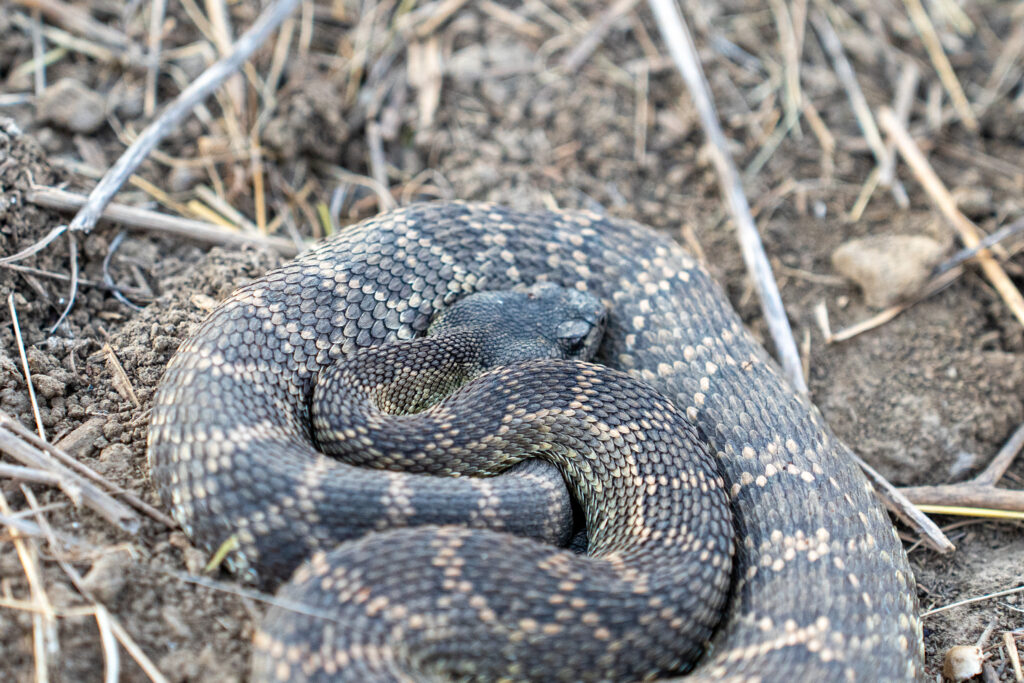
Southern Pacific Rattlesnake
Habitat
Found in a wide range of habitats from seaside dunes, to desert scrub, grassy plains, rocky hillsides, chaparral, open woodlands, and agricultural areas.
Color
Pale brown, gray-brown, or yellowish brown ground color overlaid with a series of large, dark brown dorsal blotches that may or may not have pale centers
Size
Adults 30 – 44 inches long, sometimes up to 54 inches.
Age
20 years
Diet
Eats birds, lizards, snakes, frogs, insects, and small mammals, including mice, rats, rabbits, hares, and ground squirrels. (Adult California Ground Squirrels are immune to rattlesnake venom and will intensely confront any snake they feel to be a threat.)
Description
The Southern Pacific Rattlesnake, which can live up to 20 years, is venomous and consumes small animals such as mice, rats, rabbits, hares, ground squirrels, birds, lizards, snakes, frogs, and insects. Mature California Ground Squirrels are immune to the venom of rattlesnakes and will aggressively engage any snake they perceive as a threat.
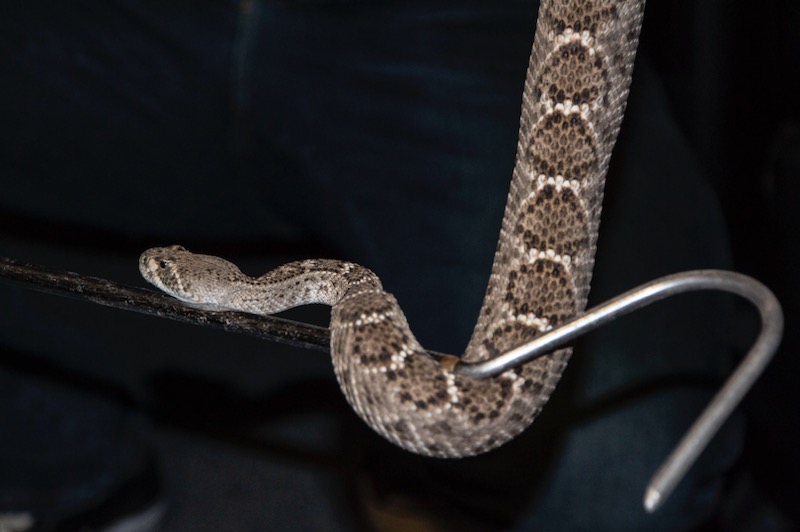
Western Diamond Rattlesnake
Habitat
In California inhabits only desert areas in the southern Mohave Desert and throughout most of the Sonoran Desert in California. May also be found in areas in the desert modified by urban development or agriculture.
The species throughout its range inhabits arid and semiarid areas including plains and mountains, woodlands and pine forests, deserts, canyons and rocky vegetated foothills.
Age
20 years
Description
The predominant color of the pattern is typically a dusty-appearing gray-brown, but it can also be pinkish-brown, brick red, yellowish, pinkish, or chalky white.
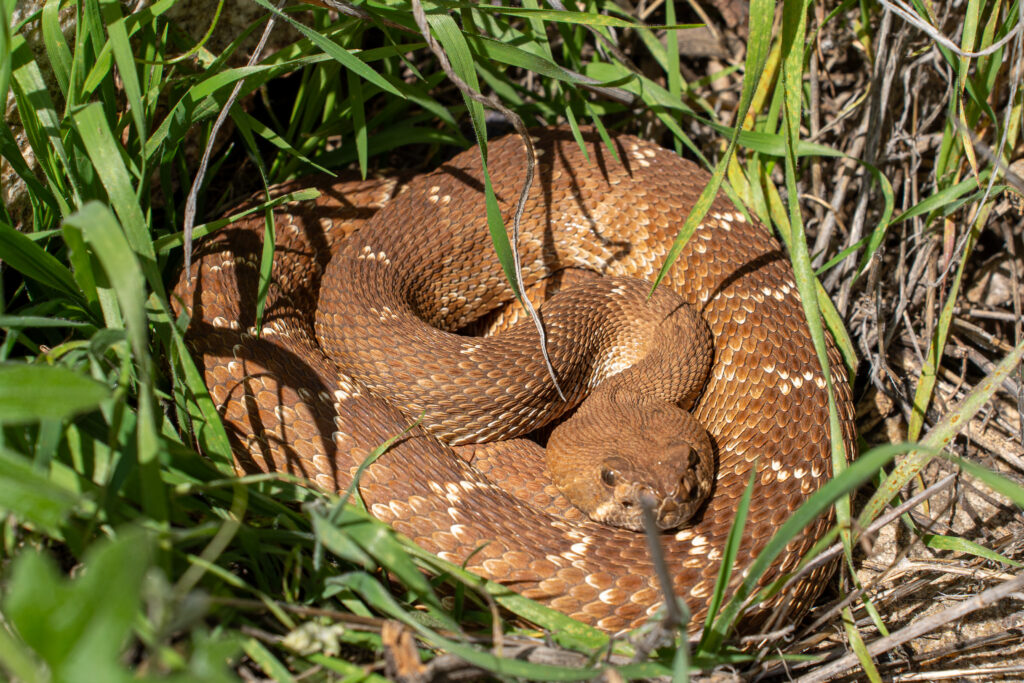
Red Diamond Rattlesnake
Age
15 or 16 years
Description
Adults usually are 2 to 4.5 feet long and range from 30 to 65 inches (76 to 165 cm). Pink, reddish-tan, reddish-brown, or brick red are all possible ground colors.
The back is marked by diamond-shaped blotches that typically have light edges.
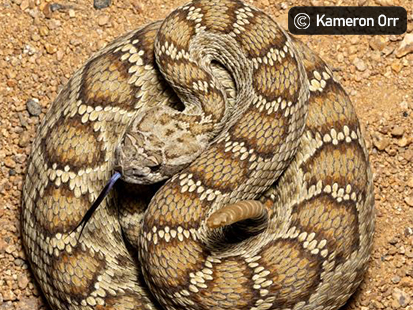
Mojave Rattlesnake
Age
24 years
Description
The most venomous snake in the State with a lifespan of 24 years. This rattlesnake prefers to eat small mammals, including mice, rats, rabbits, and gophers, although it will also consume lizards and amphibians. Although it is primarily a snake of the high desert or lower mountain slopes, it can also live in lowland areas with sparse vegetation, such as areas with cacti, Joshua tree forests, or grassy plains. It is frequently found near scrub brushes like sage, mesquite, and creosote.
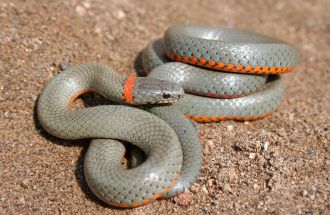
Pacific Ring-necked Snake
Age
10 years
Description
The morphology of ring-necked snakes is constant mainly throughout most of their distribution.
Its consistent dorsal color of olive, brown, bluish-gray, or smokey black is only interrupted by a pronounced yellow, red, or yellow-orange neckband. The unique neckband is absent in a small number of individuals in New Mexico, Utah, and other noteworthy regions. Moreover, individuals could have difficult-to-identify neck bands that are reduced in hue or only partially colored; pigmentation might also be more cream-colored than brilliant orange or red.
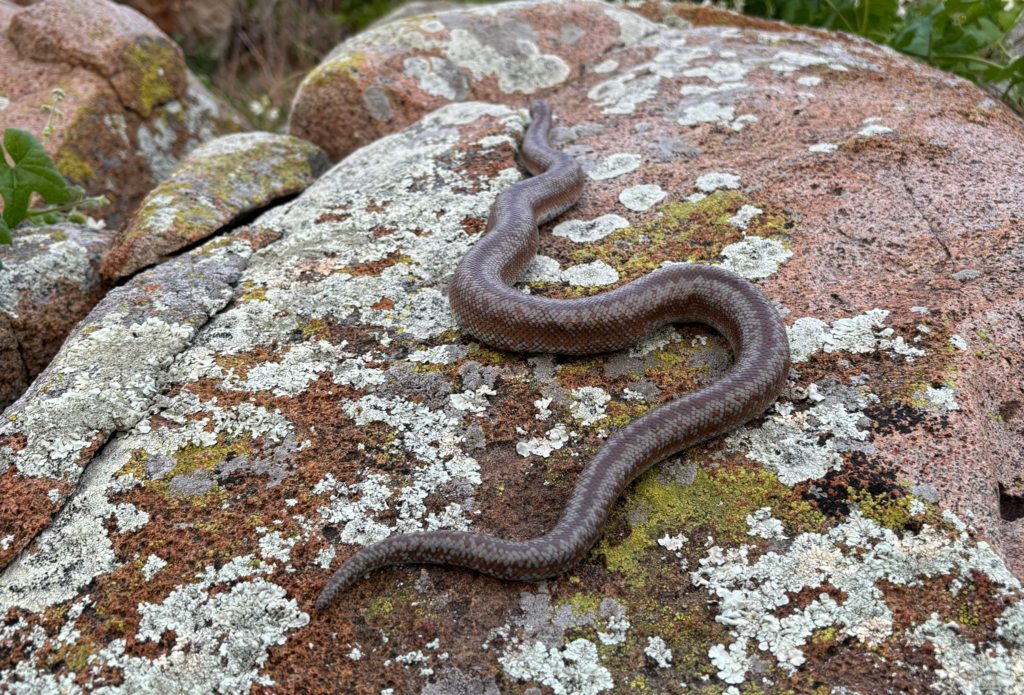
Rosy Boa
Habitat
Inhabits arid scrublands, semi-arid shrublands, rocky shrublands, rocky deserts, canyons, and other rocky areas.
Appears to be common in riparian areas, but does not require permanent water.
Age
18 to 22 years
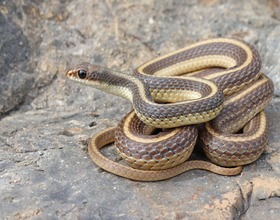
Patch-nosed Snake
Age
14 years
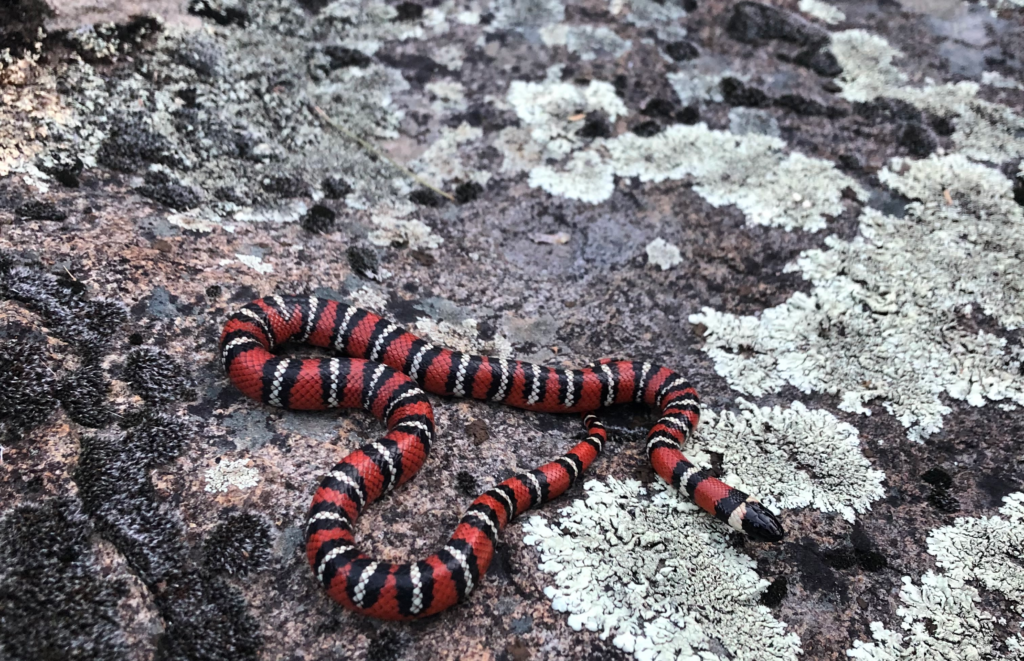
Mountain Kingsnake
Color
Black, red, and white bands
Age
Up to 20 years
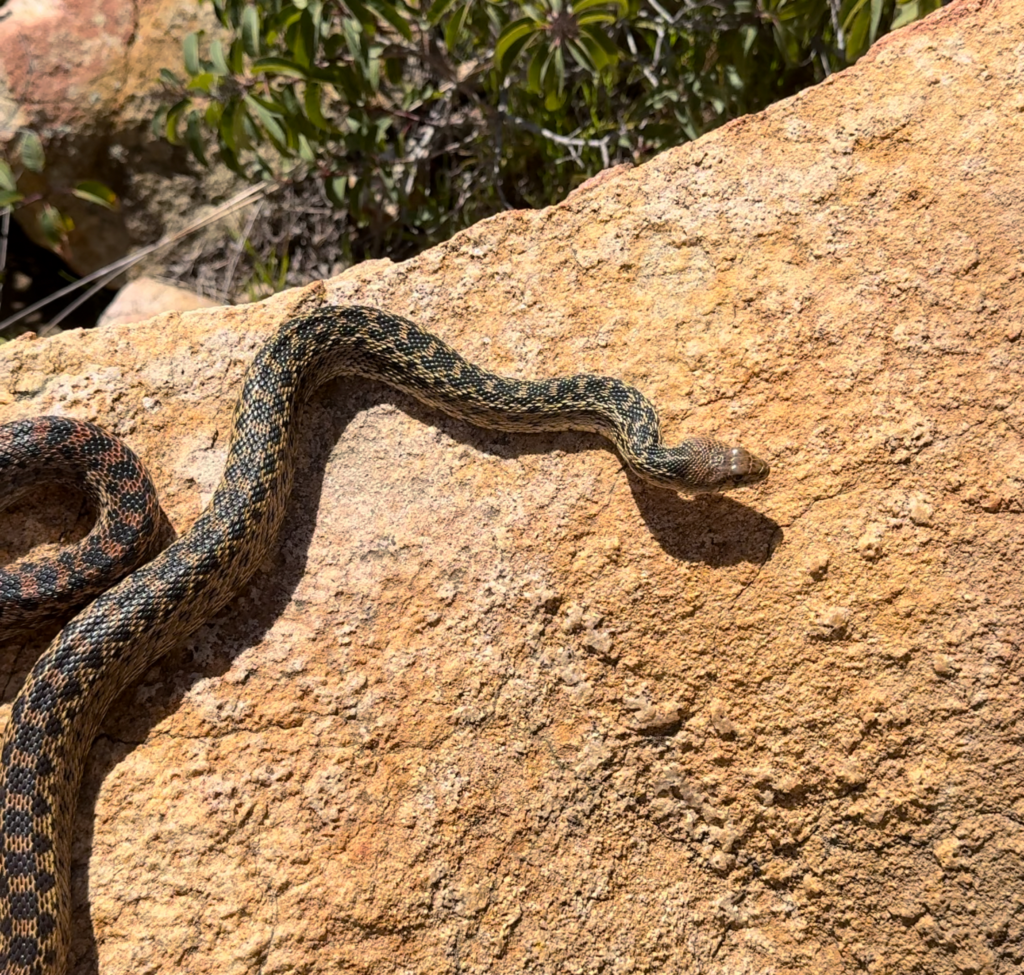
Gopher Snake
Color
Ground color is tan, light brown or yellowish, with large brown or blackish rounded blotches along the back and smaller markings on the sides.
The dorsal blotches can fuse together producing a very dark color.
The underside is cream to yellow with dark spots.
The back of the neck is often a dull orange.
There is usually a dark stripe across the head in front of the eyes and a dark stripe from behind each eye to the angle of the jaw.
Juveniles tend to have a darker and more compact pattern than adults.
Age
12 – 15 years
Description
With large, rounded brown or blackish blotches along the back and more minor markings on the sides, the ground color is tan, light brown, or yellowish.
The dorsal blotches can fuse, producing a very dark color.
With dark markings, the underside is cream to yellow.
Often, the back of the neck is a dull orange color.
Typically, a black stripe crosses the head in front of the eyes to the angle of the jaw.
Compared to adults, juveniles typically have a darker and more compact pattern.
Most Pituophis catenifer annectens adults measure between 4 and 5 feet in length (122 -152 cm.)
A 12- to 15-year lifespan for a huge snake with highly keeled scales, a small head that is somewhat wider than the neck, a projecting, bluntly rounded rostral scale on the tip of the snout and heavy keel scales.
It mostly consumes small mammals, particularly mice, moles, pocket gophers and rabbits, as well as birds’ eggs and young nestlings. Occasionally consumes insects and lizards.
It is located from sea level to the mountains in various habitats, including grassland, coastal sage scrub, agricultural lands, riparian areas, woodlands, and deserts. It is very prevalent around the shore.
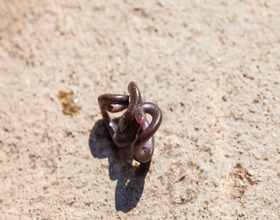
Southwestern Threadsnake
Age
7 years
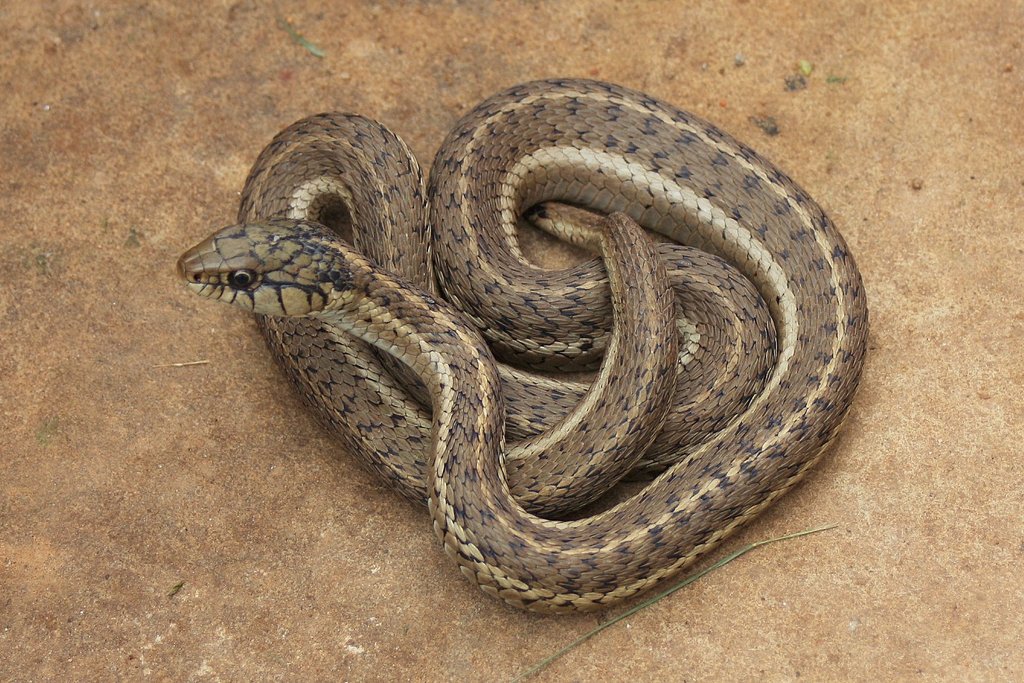
Two-Striped Garter Snake
Age
7 to 10 years
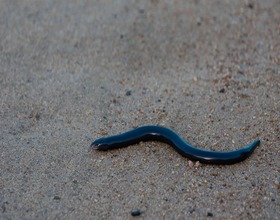
Blind Snake
Age
4 years
Description
10–12 inches long with a four-year lifespan
Insects, their larvae, and their eggs comprise most of their diet. It can be found in scrub and deserts where the soil is sufficiently loose for digging.
Like most species in the family Leptotyphlopidae, it resembles a long earthworm and spends its life underground in burrows that can reach depths of 20 meters (66 feet). It is also known to invade ant and termite nests. Its essentially rudimentary eyes serve no purpose for seeing. It has light-detecting black eyespots and is shiny, wormlike, cylindrical, blunt at both ends, and pink, purple, or silvery-brown in color. The tail has a spine at the end that it uses for burrowing, and the skull is thick to allow for this. It is fluorescent under low-frequency UV lights.
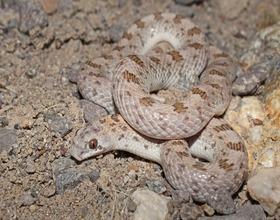
Spotted Leaf-Nosed Snake
Age
3 years
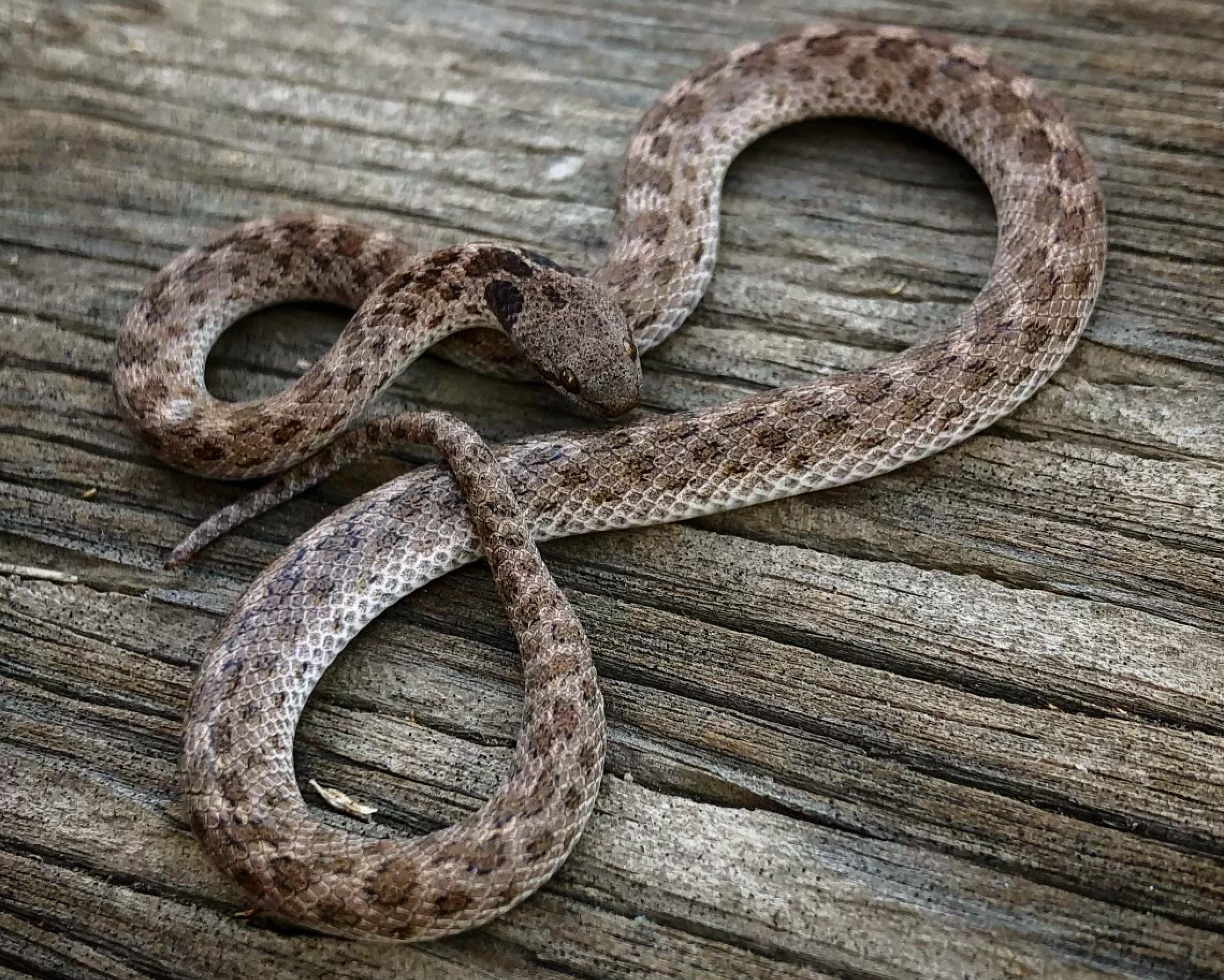
Night Snake
Age
12 years
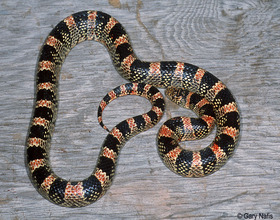
Long-nosed Snake
Age
12 – 20 years
Description
It has a lifespan of 12 to 20 years and is not venomous.
The long-nosed snake gets its common name from the length of its snout, which is distinctively long and slightly upturned. It is tricolored, somewhat resembling a coral snake, and has a yellow or cream-colored background with black and red saddles. The long-nosed snake can be identified by the cream-colored patches that appear within the saddles of black. Its undivided subcaudal scales set it apart from all other harmless snakes in the United States.
Most snakes have a saddled design and are red, black, and white.
White is the background color, typically richly specked with black and red by the alternating red and black saddles. The saddles do not ring the body. The underside is yellow or cream and lacks patterns.
They are 16 to 60 inches long (40 – 152 cm). Most snakes are 16 to 30 inches long (40 – 76 cm).
It mostly consumes lizards, particularly whiptails, as well as lizard eggs, tiny snakes, small mammals, young birds, potentially bird eggs, and insects. Large prey is destroyed by constriction, while little prey is overcome.
It Inhabits grasslands, shrublands, prairies, and semi-arid and arid deserts.
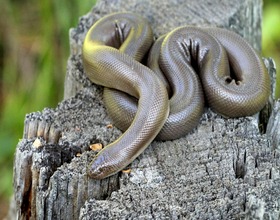
Rubber Boa
Color
Uniform in dorsal color – light brown, dark brown, pink, tan, or olive-green above, and yellow, orange, or cream colored below.
There is usually no pattern below, but sometimes there is dark mottling.
Age
40+ years
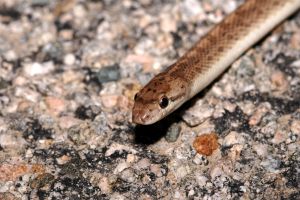
Glossy Snake
Age
10 – 20 years
Diet
Preys mostly on sleeping diurnal lizards, but also eats small snakes, terrestrial birds, and nocturnally-active mammals.
Hunts active mammals at night by waiting in ambush.
Kills prey by direct swallowing or constriction.
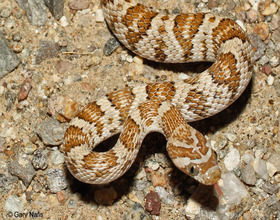
Lyre Snake
Age
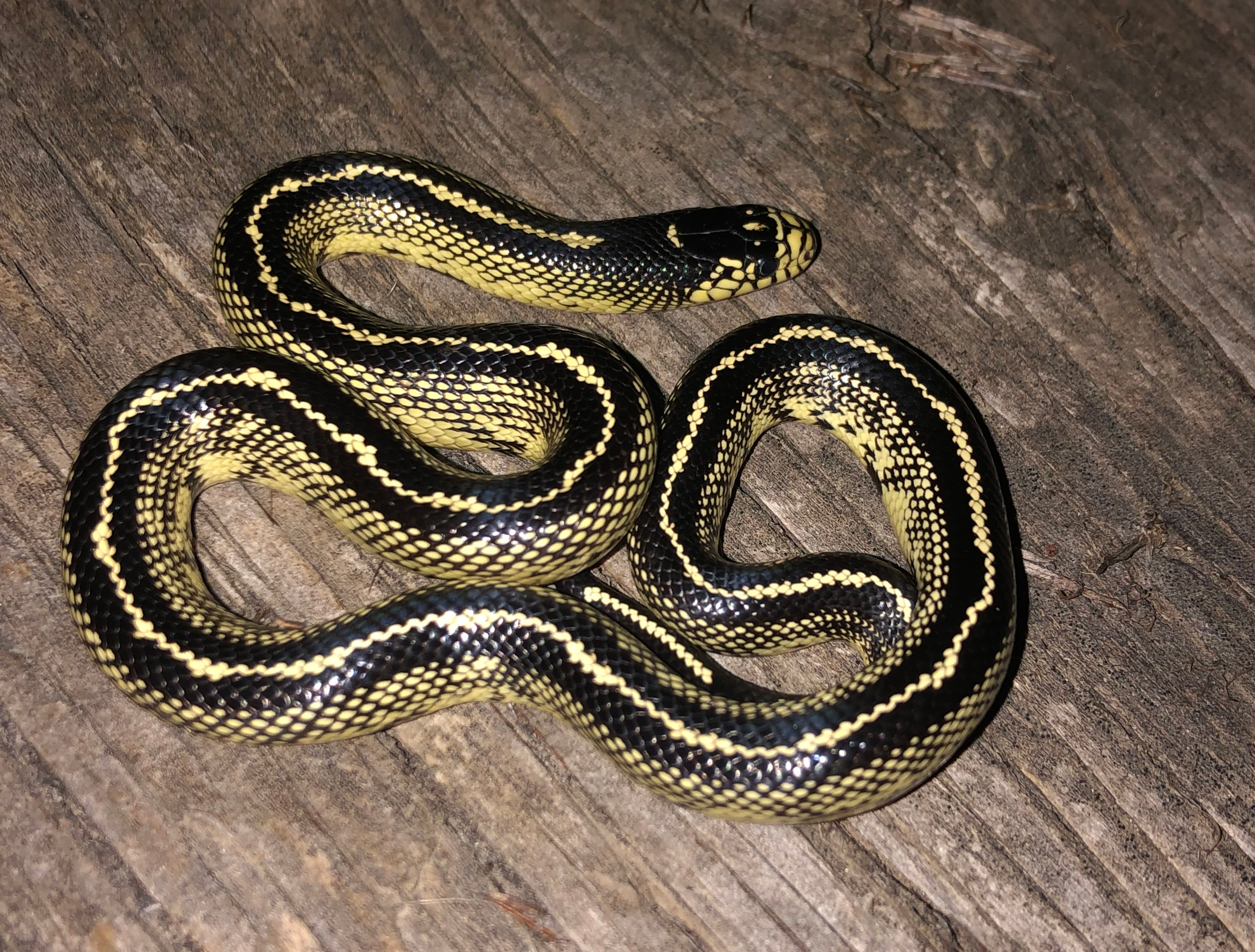
Kingsnake

Southwestern Threadsnake
Habitat
Color
Age
24 years
Diet
Description

Pacific Ring-necked Snake
Habitat
Color
Age
10 years
Diet
Description
FAQs
- Do not approach the snake. If on a hike, allow the snake to pass.
- If the snake is on your property call your respected snake removal specialist
- Please be aware that in most cases calling the fire department or pest control will result in the death of the snake
- Stay calm and know the snake is not trying to harm you
Make sure to call a company that is licensed, bonded and insured. It’s important to make sure who you end up calling is legit. This will prevent you from any liability if the property gets damaged or someone gets hurt.
Rattlesnakes are ambush predators. They rely on their speed and stealth to secure their meal. They won’t always rattle when you walk by them. So the most important tips to know are…
- Stay clear of bushes, shrubs and thick vegetation.
- They respond to your presence with a defensive posture, not aggressive.
- They are absolutely crucial to the ecosystem so it’s best to never kill the snake but to hire your professional snake specialist to take care of them
- If bit, do your best to not panic. Stay calm and call 911
- Always pay more attention to the ground and where your next step is
* Important disclaimer, these are just tips to help avoid any possible encounter with snakes. However that does not mean you will not be bit *
